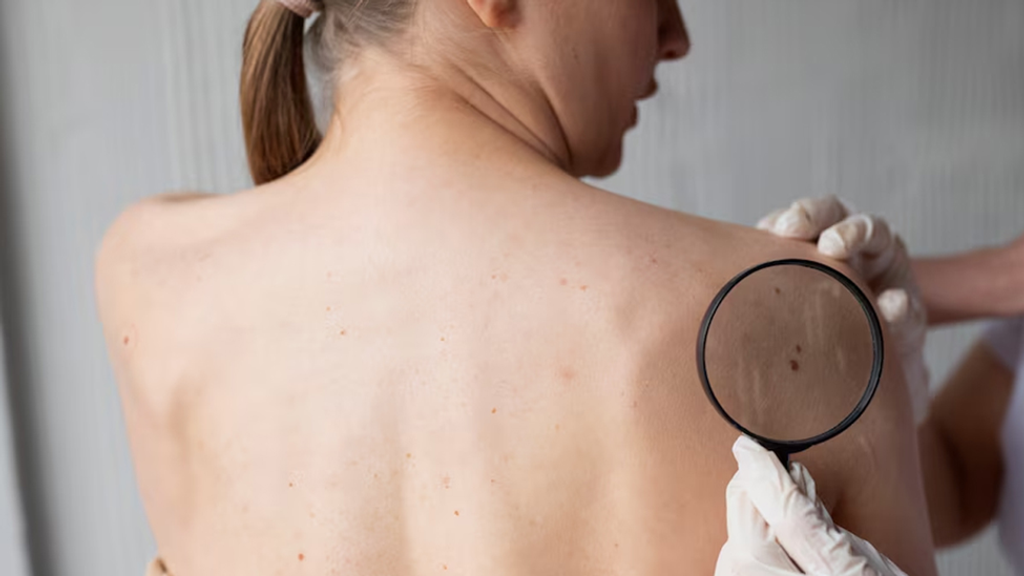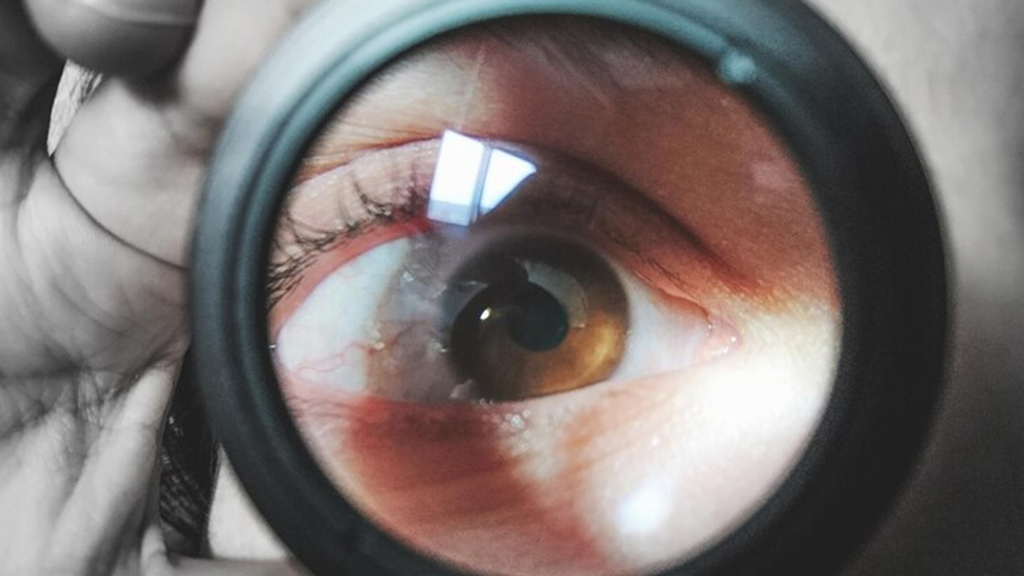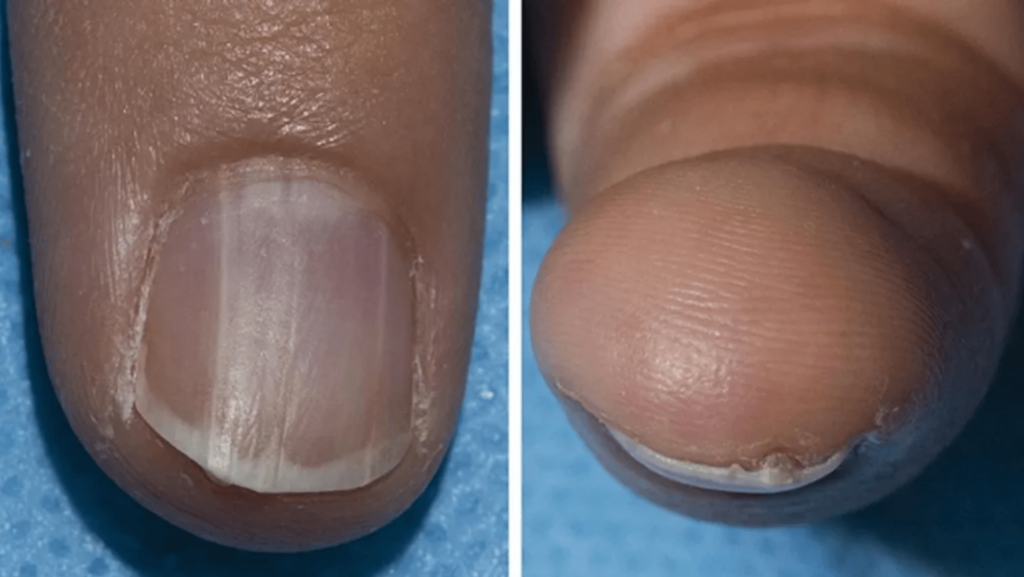Researchers at the National Institutes of Health (NIH) have uncovered a surprising link between a benign nail abnormality and a rare inherited disorder called BAP1 tumor predisposition syndrome. This condition dramatically heightens the risk of developing cancerous tumors in the skin, eyes, kidneys, and the mesothelium, the protective lining of the chest and abdomen.
BAP1 tumor predisposition syndrome stems from mutations in the BAP1 gene, which ordinarily acts as a tumor suppressor. These groundbreaking findings were published in JAMA Dermatology and presented at the Dallas Society for Investigative Dermatology Annual Meeting.
The discovery was part of a comprehensive study at the NIH Clinical Center, where participants underwent screening for BAP1 variants. The study included annual dermatological screenings for individuals aged two and older and focused on 47 people from 35 families affected by BAP1 tumor predisposition syndrome.

Benign Nail Signals Cancer Risk
During a baseline genetic assessment, a participant noticed subtle changes in his nails, which piqued the researchers’ curiosity. Their investigation led to the discovery of onychopapilloma, a benign tumor identified by a distinctive colored band (usually white or red) along the nail and thickening and thickening at the nail’s end. Typically, onychopapilloma affects only one nail.
However, the study found that among participants with BAP1 tumor predisposition syndrome aged 30 and older, 88% had onychopapilloma affecting multiple nails. This finding suggests that nail screening could be especially beneficial for those with a personal or family history of melanoma or other BAP1-associated cancers.
Here’s What the Experts Are Saying
“This condition is rarely seen in the general population. We believe that noticing nail changes indicative of onychopapillomas on multiple nails should prompt consideration of a BAP1 tumor predisposition syndrome diagnosis,” stated Dr. Edward Cowen, Head of Dermatology Consultation Services at NIH’s National Institute of Arthritis and Musculoskeletal and Skin Diseases (NIAMS).
Dr. Raffit Hassan, co-senior author and Principal Investigator of the clinical protocol, emphasized the importance of multidisciplinary teams and natural history studies in uncovering valuable insights about rare diseases.

Melanoma Symptoms
According to the World Health Organization, melanoma is a serious form of skin cancer that can become life-threatening if not caught early. While changes in moles or skin lesions are well-known indicators, there are several subtler signs that people should be aware of.
Recognizing these early symptoms can be critical for timely diagnosis and treatment.
Beyond the benign nail condition, other subtle signs can indicate melanoma. Speaking with the Onlymyhealth team, Dr. Ajay Rana, Dermatologist, Aesthetic Physician, and Founder & Director of ILAMED, highlighted a few:
- Changes in Existing Moles: Watch for moles where one half doesn’t match the other, edges are ragged, notched, or blurred, or there are color variations. Moles larger than 6 millimeters, changes in size, shape, color, or elevation, and new symptoms like bleeding, itching, or crusting are all warning signs.
- New Moles or Spots: Be alert for new moles or skin lesions, especially those that stand out from your other moles, often called the “ugly duckling sign.”
- Unusual Pigmentation: Dark streaks or spots under a fingernail or toenail that are not caused by injury should raise concern.
- Non-Healing Sores: A sore that doesn’t heal or keeps recurring in the same spot needs attention.
- Changes in Sensation: Itchiness, tenderness, or pain in a mole or skin lesion can be a red flag.
- Redness or Swelling: New redness or swelling beyond the border of a mole should not be ignored.
- Surface Changes: Moles that start to ooze, bleed, become scaly, or develop lumps or bumps need evaluation.
- Satellite Moles: The appearance of new moles or pigment near an existing mole should be checked out.
The discovery of a benign nail condition as a potential cancer indicator highlights the critical importance of noticing subtle changes in nail health. Regular nail screenings, especially for those with a personal or family history of melanoma or other BAP1-associated cancers, can lead to early detection and timely intervention. NIH researchers emphasize that this finding could revolutionize diagnostic practices and improve outcomes for at-risk individuals. Staying vigilant about both obvious and subtle signs of melanoma is essential in the ongoing battle against skin cancer.
References
Your Nails Can Signal If You Are Prone to Cancer: NIH Highlights Benign Nail Condition Linked to Rare Syndrome [Internet]. Accessed on May 28, 2024. Available from: https://www.onlymyhealth.com/national-institutes-of-health-highlights-benign-nail-condition-linked-to-increased-cancer-risk-1716201743
About Docquity
If you need more confidence and insights to boost careers in healthcare, expanding the network to other healthcare professionals to practice peer-to-peer learning might be the answer. One way to do it is by joining a social platform for healthcare professionals, such as Docquity.
Docquity is an AI-based state-of-the-art private & secure continual learning network of verified doctors, bringing you real-time knowledge from thousands of doctors worldwide. Today, Docquity has over 400,000 doctors spread across six countries in Asia. Meet experts and trusted peers across Asia where you can safely discuss clinical cases, get up-to-date insights from webinars and research journals, and earn CME/CPD credits through certified courses from Docquity Academy. All with the ease of a mobile app available on Android & iOS platforms!






